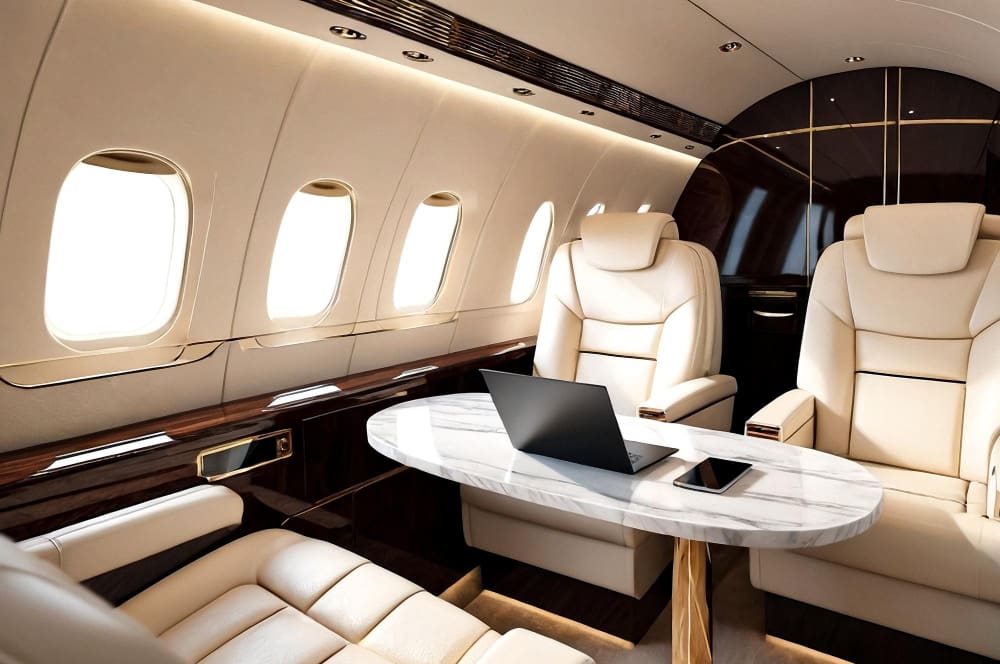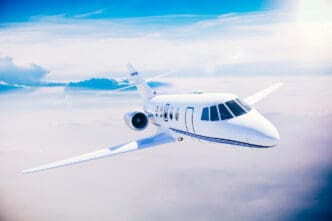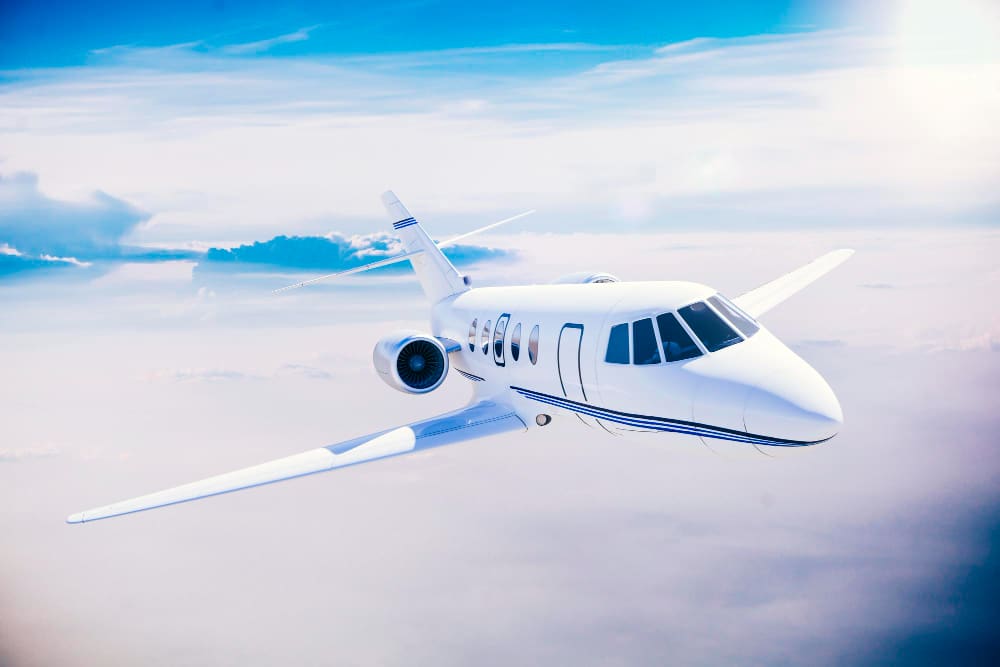For the world’s billionaires, from tech titans like Elon Musk to financiers like Ken Griffin, travel is not a matter of booking a commercial flight; it’s a precisely managed logistical operation centered on private jets and helicopters. These flying offices and residences are deployed globally, 24/7, to maximize what the ultra-wealthy value most: time. The core reasons—unmatched efficiency, absolute privacy, and ironclad security—transform these aircraft from mere luxuries into indispensable tools for managing global empires and complex personal lives.
More Than a Luxury: The Business Case for Private Aviation
While the image of a billionaire on a private jet evokes visions of champagne and extravagance, the reality is often far more pragmatic. The primary driver for private aviation is the relentless pursuit of efficiency. Time is the one asset that cannot be replenished, and for individuals whose decisions can shift markets or direct thousands of employees, every saved hour translates into significant value.
Commercial air travel is riddled with time-consuming hurdles. These include traveling to major airports, navigating security lines, waiting at gates, boarding delays, and lengthy customs procedures upon arrival. Private aviation eliminates nearly all of these. A billionaire can be driven directly onto the tarmac of a small, private airfield, board their aircraft within minutes, and take off on their own schedule.
This flexibility extends to the destination. Private jets can access thousands more airports worldwide than commercial airlines, allowing for travel to smaller towns or locations closer to a final destination, like a factory or remote resort. An executive could, for instance, hold a breakfast meeting in New York, a lunch meeting in Chicago, and inspect a facility in rural Nebraska before returning home for dinner—a schedule utterly impossible using commercial carriers.
Furthermore, the jet cabin itself becomes a secure, mobile boardroom. With high-speed satellite internet and encrypted communication systems, teams can conduct confidential meetings, review sensitive documents, and make critical decisions mid-flight without fear of eavesdropping. This privacy is a non-negotiable requirement when billions of dollars in enterprise value are at stake.

The Billionaire’s Fleet: Choosing the Right Aircraft
Not all private jets are created equal. The choice of aircraft depends entirely on the owner’s mission profile: their typical travel distance, passenger load, and desired amenities. The market is dominated by a few key manufacturers who specialize in different classes of jets.
The Long-Range Jet Set
For global business leaders and those with intercontinental lifestyles, the top-tier, long-range jet is the standard. Aircraft like the Gulfstream G650ER and G700, or the Bombardier Global 7500 and 8000, are the crown jewels of private aviation. These jets are defined by their incredible range, capable of flying over 7,500 nautical miles non-stop. This connects city pairs like New York to Hong Kong or London to Singapore without a costly and time-consuming refueling stop.
They also travel at high speeds, often just shy of the sound barrier (Mach 0.925), further reducing travel time. Their large cabins can be configured to seat up to 19 passengers or completely customized with private staterooms, full bathrooms, and dedicated crew rest areas for long-haul comfort.
The Helicopter: Mastering the Last Mile
The helicopter is the essential tool for short-distance, point-to-point travel. It serves as the “last mile” solution, bridging the gap between a private airport and a final destination. Billionaires use helicopters to bypass crippling city traffic, moving from an airport to a downtown helipad in minutes rather than hours.
They are also used for travel between personal properties, such as from a country estate to a city penthouse, or from the shore to a superyacht anchored offshore. Popular models include the Sikorsky S-76, known for its reliability and spacious cabin, and the sleek Airbus ACH series, which offers VIP interiors akin to a luxury sedan.
Inside the Flying Fortress: Unparalleled Customization
The interior of a billionaire’s jet is a testament to bespoke design and technology. It is far more than just a comfortable seat; it is a fully functional extension of their home and office.
The Office in the Sky
Productivity is paramount. Most large-cabin jets feature a dedicated conference area with a large table, comfortable seating, and integrated high-definition screens for presentations. The most significant recent advancement is the widespread adoption of high-speed satellite internet, such as Starlink Aviation, which provides bandwidth capable of supporting video conferencing, data streaming, and secure VPN access for the entire flight.
A Home Above the Clouds
For journeys spanning multiple time zones, comfort is key to arriving refreshed and ready for business. This is why many custom jets feature a private stateroom with a full-size bed. Adjoining en-suite bathrooms can include stand-up showers with sophisticated water recovery systems.
A gourmet galley, often larger than those in a small apartment, is staffed by a corporate flight attendant who may also be a trained chef. They can prepare multi-course meals from fresh ingredients, catering to any dietary preference. Entertainment systems are state-of-the-art, with cinema-quality screens, immersive sound, and intuitive controls for lighting and climate. The level of personalization can be extreme; President Donald Trump’s personal Boeing 757, for example, became famous for its lavish interior featuring extensive 24-karat gold plating and branded details.
The Three Paths to the Sky: Ownership, Fractional, and Charter
Accessing this world of private travel doesn’t always require outright ownership. There are three primary models, each with distinct costs and benefits.
Full Ownership: The Ultimate Control
Owning an aircraft outright provides the ultimate in freedom and personalization. The owner has total control over the aircraft’s schedule, crew, and interior design. However, this comes at a staggering cost. Beyond the initial purchase price of $50 million to over $80 million for a new long-range jet, annual operating costs can run between $3 million and $7 million. These costs cover crew salaries, maintenance, insurance, fuel, and hangarage.
Fractional Ownership: The Smart-Money Middle Ground
Pioneered by companies like NetJets, fractional ownership allows an individual or corporation to buy a share in a specific aircraft. A 1/16th share, for example, might entitle the owner to 50 hours of flight time per year. The owner gets the benefits of ownership—guaranteed access to a consistent, high-quality aircraft—without the massive capital outlay or operational headaches. Costs are more predictable, and owners can often access different aircraft types within the provider’s fleet as needed.
On-Demand Charter: Maximum Flexibility
Chartering is the “pay-as-you-go” model of private aviation. Using a broker or a direct operator like VistaJet, a client can book a specific jet for a specific trip. This offers the most flexibility with no long-term capital commitment. It’s an excellent option for those who fly privately less frequently or whose needs vary significantly from trip to trip. However, on a per-hour basis, chartering is often the most expensive option, with rates for a heavy jet ranging from $15,000 to over $25,000 per hour.
The Unseen Ecosystem and Turbulent Skies
Behind every seamless private flight is a complex ecosystem of professionals. This includes highly trained pilots and cabin crew, meticulous maintenance engineers, and flight dispatchers who handle flight planning, weather monitoring, and permits. On the ground, Fixed-Base Operators (FBOs) act as private terminals, providing services like fueling, passenger lounges, and discreet customs clearance.
However, this convenience comes with significant public scrutiny, particularly regarding its environmental impact. A private jet’s carbon emissions per passenger are exponentially higher than a commercial flight’s. In response, the industry is slowly moving toward solutions like Sustainable Aviation Fuel (SAF), carbon offsetting programs, and developing more fuel-efficient aircraft designs to mitigate its footprint.
The Ultimate Conversion of Wealth
Ultimately, the way billionaires travel is a direct reflection of their core priorities. It is a system engineered to conquer geography and compress time, transforming an aircraft into a powerful business tool that enables global commerce and management on a scale previously unimaginable. While steeped in luxury, private aviation is fundamentally about converting financial wealth into the one resource that is truly finite: time. It is the ultimate expression of control over one’s schedule, environment, and efficiency in a world that never stops moving.








